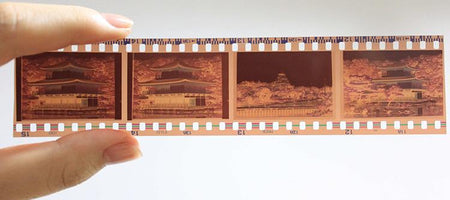Think about this for a second: your phone, which can make and receive calls from around the world, allow you access to infinite content on the web, entertain you with games, movies and more, not to mention the evolving spectacle of social media, is also an incredibly powerful video recorder. That’s a lot of awesome in a sleek and stylish package.
But before our smartphones were actually ... smart, or phones, recording video looked a lot different. So let’s check out some of the old camcorder formats that graced our hearts and hurt our shoulders in the process.
The 1970s
Before the camcorder was officially invented, video cameras were basically designed for television broadcast. They were also the size of dinosaurs, mounted on special large pedestals and wired out the wazoo. As technology kept improving, camcorders began decreasing in size and increasing everywhere else, everything from quality to memory to audio capability and recording time. And those early iterations paved the way for the camcorders that were used to capture so many of our childhoods.
Sony Betacam & Betamovie BMC-100P – 1983
The first camcorders that were truly what we’d define as camcorders were the Sony Betacam and Betamovie. The Betacam was more for professional use, and it eliminated some technical difficulties and extra wires, making it fairly portable for the shooter to maneuver around. Well, as portable as a cinderblock over the shoulder can be. The Betamovie camcorder was bulky but portable and again rested on the operator's shoulder. There was just one big problem with these early camcorders, the Betacam and Betamovie both used the same cassette format as the Betamax, which anyone in the early 80s already knew was on the way out the door due to the popularity of the newer and cheaper VHS. Needless to say, they didn’t last long. But, you get an “A” for effort for Sony.
JVC VHS-C camcorder – 1983
Later in 1983, JVC released the VHS-C camcorder, which helped reduce the bulkiness some. It leveraged the VHS and VCR playback technology by taking it one step further – recording on compact VHS tapes (VHS-C) – the “C” standing for compact. This helped cut down on the sheer size of the camcorder, making it an improvement from the Betcam and Betamovie. Dads everywhere rejoiced at the shoulder-saving device.
Kodak 8mm video camcorder/Sony Compact 8 – 1984/85
In the mid-80s, 8mm became a popular tape format for camcorders and would spawn a long list of offspring over the next 10 years or so, including the Hi8 and Digital 8 formats. Sure, 8mm film was nothing new, it had been around for decades, but these digital 8mm tape formats most certainly were novel. These camcorders were a drastic reduction in size since 8mm tapes were so small, which made toting these bad boys around a heck of a lot easier. Again, one small step for the film industry, one giant leap for dads everywhere.
Full-size Panasonic, RCA and Hitachi VHS camcorders – 1985-87
By the late 80s, full-sized shoulder mount VHS camcorders by some of the industry’s biggest brands were being created primarily for videophiles, videographers and video journalists. Although they were a step back in size and ease of maneuverability, they were able to record on full VHS tapes, and by 1987 full-size super VHS tapes. This cut down on steps, increased recording capacity and proved a lot easier for direct VCR playback. It was as close to shoot and play as you could possibly get.
JVC, Panasoinc and the DV camcorders – 1995
With the 90s in full swing and grunge taking over America, several popular manufactures brought their own formats to the next camcorder launch, the DV. This true digital format became the standard for home video production. If you’ve got home videos from the 90s, there’s a strong chance they’re DV tapes.
A little later in the decade, around the second coming of the boy band craze, MiniDV was made popular. This made shooting and porting your camcorder around easier than ever … that is until the MicroDV came out in 2001 with the smallest tapes ever.
HDV camcorder
In 2003, Sony, JVC, Canon and Sharp released tape variations of the first consumer-affordable high definition camcorder tape – the HDV. Unfortunately, for camcorder enthusiasts, camcorders had drastically reduced in popularity by the mid 2000s because of the popularity of DVDs and other new and emerging recording technology. Phones started having the ability to record video, making the purchase of a camcorder seem futile. Fast forward a few years and you’ve got the first smartphones, what we’ve all become accustomed to for shooting everyday videos to share on social media and the like.
Looking back, it’s crazy to see how far we’ve come from our cumbersome camcorder days to our sleek smartphone cameras of today. It may have taken more than 40 years to get there, but really that’s a small timeframe when you think about how long video has been around (more than a century). With so many videotape formats created along the way, you or your parents are bound to have a box full of old family footage. Tapes that you should get digitized to make sure those unforgettable memories continue to live on. Good news is, we can help and there’s no camcorder required.













